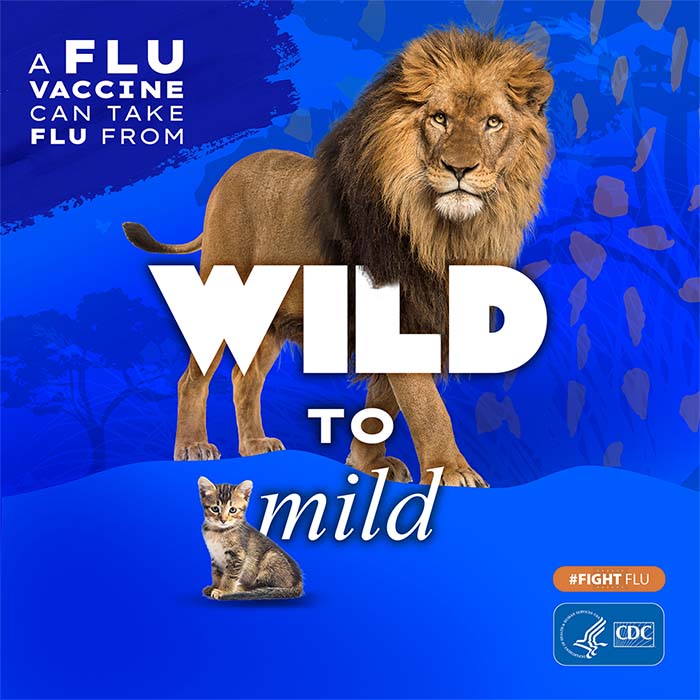Table: Summary of Studies of Efficacy/Effectiveness of HD-IIV3, aIIV3, and RIV4 Compared with Unadjuvanted SD-IIVs against Laboratory-Confirmed Influenza Among Older Adults*
Pages in this Report
Note: Fluzone High-Dose (HD-IIV3) and Fluad (aIIV3) are available in quadrivalent formulations (Fluzone High-Dose Quadrivalent [HD-IIV4] and Fluad Quadrivalent [aIIV4]) for the 2020-21 influenza season. Comparative data on the efficacy and effectiveness of the new quadrivalent formulations are not yet available, and will be updated on this page when available.
| Comparator (Proprietary Name)Reference | Study Design | Ages Enrolled | Participants,n | Location | Primary Outcome | Main Efficacy/Effectiveness Findings | Season(s)(Predominant viruses) † |
|---|---|---|---|---|---|---|---|
| HD-IIV3 (Fluzone High-Dose, Sanofi Pasteur) | |||||||
| SD-IIV3 (Fluzone)DiazGranadosCA et al, Vaccine 2013;31:861-66. § |
RCT, double-blind |
≥65 years | 6,107 HD-IIV3
3,051 SD-IIV3 |
U.S.
(99 sites) |
Culture- and/or RT-PCR-confirmed ILI, caused by types/subtypes similar to those contained in the vaccine | Primary outcome not evaluable due to emergence of (H1N1)pdm09 pandemic (no cases meeting primary endpoint of laboratory-confirmed influenza caused by viral types/subtypes similar to those in vaccine were observed; all confirmed cases were due to (H1N1)pdm09 | 2009-10 (H1N1pdm09; not contained in HD-IIV3 or SD-IIV3) |
| SD-IIV3 (Fluzone)DiazGranados CA et al, N Engl J Med 2014;371:635-45. ¶ |
RCT, double-blind | ≥65 years | 15,990 HD-IIV3
15,993 SD-IIV3 |
U.S., Canada (126 sites) | Laboratory confirmed (Culture- and/or RT-PCR) influenza caused by any influenza viral types or subtypes, in association with protocol-defined ILI | Culture- and/or RT-PCR-confirmed influenza; any type or subtype, with protocol-defined ILI:
All: RE 24.2% (95%CI= 9.7 to 36.5) A: RE 24.0% (95%CI= 7.8 to 37.4) B: RE 25.5% (95%CI=-15.7 to 52.4) Culture- and/or RT-PCR-confirmed influenza; strains similar to vaccine, with protocol-defined ILI: All: RE 35.4% (95%CI: 12.5 to 52.5) A: RE 31.7% (95%CI: 2.9 to 52.3) B: RE 45.2% (95%CI: -2.2 to 71.5) Culture-confirmed influenza; any type or subtype, with protocol-defined ILI: All: RE 23.1% (95%CI= 7.5 to 36.2) A: RE 23.4% (95%CI= 6.0 to 37.6) B: RE 21.7% (95%CI=-23.8 to 50.8) Culture-confirmed influenza; strains similar to vaccine. with protocol-defined ILI: All: RE 31.5% (95%CI: 4.6 to 51.1) A: RE 27.0% (95%CI: -8.5 to 51.2) B: RE 41.4% (95%CI:-10.3 to 69.8) |
2011-12 (H3N2)and2012-13 (H3N2, mismatch) |
| RIV4 (Flublok Quadrivalent, Sanofi Pasteur) | |||||||
| SD-IIV4
(Fluarix Quadrivalent) Dunkle LM et al, N Engl J Med 2017;376:2427 -36. ** |
RCT, double-blind |
≥50 years | 4,303 RIV4
4,301 IIV4 |
U.S.
(40 sites) |
RT-PCR-confirmed ILI caused by any type or subtype. | RT-PCR-positive protocol-defined ILI:
Ages ≥50 years: All influenza: RE 30% (95%CI: 10 to 47) Influenza A: RE 36% (95%CI: 14 to 53) Influenza B: RE 4% (95%CI: -72 to 46) RT-PCR-positive protocol-defined ILI: Ages 50 through 64 years: All influenza: RE 42% (95%CI: 15 to 61) Ages ≥65 years: All influenza: RE 17% (95%CI: -20 to 43) Culture-positive protocol-defined ILI: Ages ≥50 years: All influenza: RE 43% (95%CI: 21 to 59) Influenza A: RE 44% (95%CI: 22 to 61) Influenza B: RE 25% (95%CI:-121 to 75) Culture-positive protocol-defined ILI: Ages 50 through 64 years: All influenza: RE 44% (95%CI: 10 to 65) Ages ≥65 years: All influenza: RE 42% (95%CI: 9 to 65) |
2014-15
(Subtyping and similarity of isolates to vaccine viruses was not assessed; drifted H3N2 viruses predominated nationally) |
| aIIV3 (Fluad, Seqirus) | |||||||
| SD-IIV3 (predominantly Fluviral; Glaxo Smith Kline); Unvaccinated††
Van Buynder PG et al, Vaccine 2013;31:6122–8. |
Nonrandomized, observational, prospective test negative case-control | ≥65 years, presenting with symptoms of ILI | 165 aIIV3
62 IIV3 55 unvaccinated |
Canada (3 health authorities) | RT-PCR- confirmed ILI | Effectiveness of aIIV3 vs. unvaccinated:58% (95%CI: 5 to 82)
Effectiveness of IIV3 vs. unvaccinated: -2% (95%CI: -139 to 57) Relative effectiveness of aIIV3 vs. IIV3: 63% (95%CI: 4 to 86) |
2011–12
(H3N2) |
* Studies conducted among human participants of laboratory-confirmed (by viral culture and/or RT-PCR) influenza outcomes. Modeling and medical record database studies are not included in this Table, but are discussed in the Background Document.
† Information on predominant viruses is from U.S. national surveillance data (CDC, FluView).
§ Source: DiazGranados CA, Dunning AJ, Jordanov E, Landolfi V, Denis M, Talbot HK. High-dose trivalent influenza vaccine compared to standard dose vaccine in elderly adults: safety, immunogenicity and relative efficacy during the 2009–2010 season. Vaccine 2013;31:861–6.
¶ Source: DiazGranados CA, Dunning AJ, Kimmel M, et al. Efficacy of high-dose versus standard-dose influenza vaccine in older adults. N Engl J Med
2014;371:635–45.
** Source: Dunkle LM, Izikson R, Patriarca P, et al.; PSC12 Study Team. Efficacy of recombinant influenza vaccine in adults 50 years of age or older. N Engl J Med 2017;376:2427–36.
†† Source: Van Buynder PG, Konrad S, Van Buynder JL, et al. The comparative effectiveness of adjuvanted and unadjuvanted trivalent inactivated influenza vaccine (TIV) in the elderly. Vaccine 2013;31:6122–8.
Description
This table summarizes characteristics of several studies of high-dose inactivated influenza vaccine, adjuvanted inactivated influenza vaccine, and recombinant influenza vaccine, in which each of these vaccines was compared with a standard-dose, unadjuvanted inactivated influenza vaccine. Data included are the vaccine trade names and manufacturer (first column), study design (second column), ages enrolled (third column), number of participants (fourth column), location (fifth column), primary outcome(sixth column), main findings (seventh column), and season and predominant viruses (eighth column).
